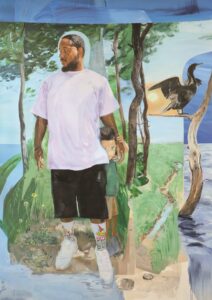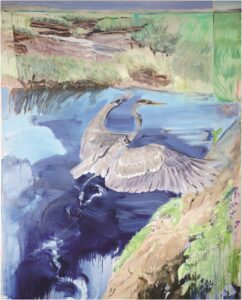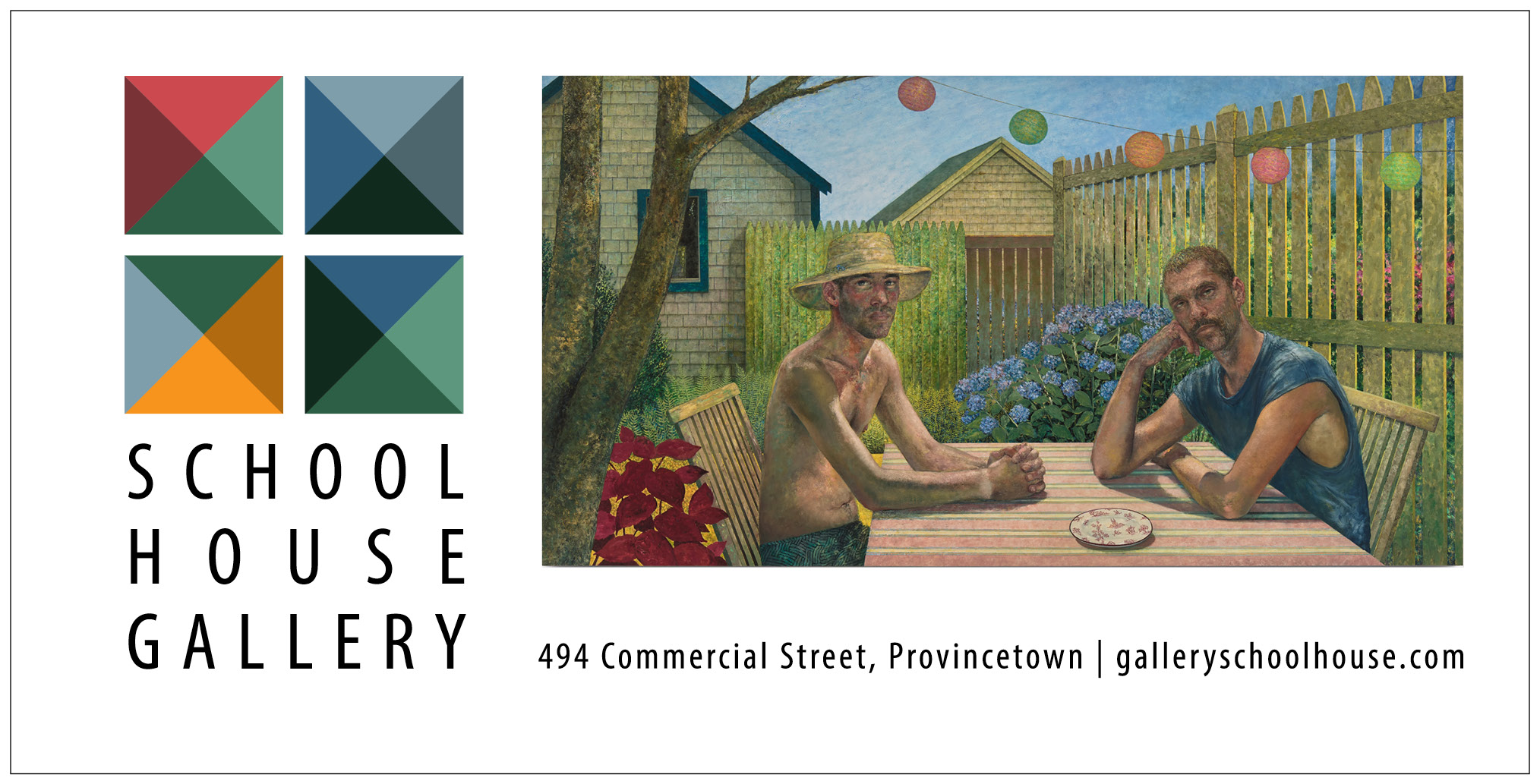James Stanley’s Views of a ‘Narrow Place’
Wellfleet artist James Everett Stanley is showing a group of paintings in an exhibition titled From the narrow place at Hirschl & Adler Modern in New York City through April 28. It is Stanley’s debut exhibition at the gallery.

The nine new paintings are inspired by observations of Stanley’s friends and neighbors in the Cape Cod landscape and “stand as nonlinear stories of people’s lives,” according to a gallery statement. Consistent with his other recent work, the paintings combine divergent moments of time with places to create a singular image. The effect conveys a shifting reality. The characters in these paintings are on unstable ground: bodies evaporate in water; a boy courts danger as he approaches a snake; and a father cradles his son’s head protectively in a disorientating landscape. Like the heron taking flight in the painting It is marvelous in our eyes, these people appear vulnerable and beautiful.

The exhibition title is taken from Psalm 118: “I called God from the narrow place, he answered me in expansiveness.” According to text accompanying the show, that “narrow place” can be interpreted as “despair, distress or being ‘hard pressed.’ ” Perhaps it’s also a reference to the specific narrow peninsula on which Stanley lives. Salvation here is in the expansiveness of the paintings: in the lush sensuality of the paint; in the collage-like scenes, which merge the most beautiful moments of a day in one image; and in the characters, pushed beyond the confines of linear time and space to a place which may be uncertain, possibly dangerous, but essentially more wondrous and more whole. —Abraham Storer
Pamela Means and the Power of the Protest Song
“Art gets right at the heart of things,” says Easthampton-based musician Pamela Means, who will be performing “The Power of the Protest Song: Our Shared History & Present Day” at the Truro Public Library on Tuesday, April 4 at 6:30 p.m.

The show, which features Means on acoustic guitar, is an exploration of the lineage and transformation of protest songs and expresses how they continue to inspire shifts in the realms of racial and social justice. It includes original music by Means as well as covers of historically significant protest songs.
Means describes her guitar style as “badass” — so much so that after playing some especially “punked-out” songs, she wore holes in two of her acoustic guitars. It’s part of what she sees as the transformative power of music. “Music has the power to change a heart, change a mind, plant a seed, and spark conversation,” she says. “It catalyzes change, perhaps more than any other educational tool.”
The all-ages performance is free. See trurolibrary.org for more information. —Dorothea Samaha
Confronting Climate Change With the Language of Dreams
Dreams for a Planet in Peril, an experimental art film written and directed by Lee Roscoe and produced by Janet Murphy Robertson, will have its regional premiere in a screening at the Cape Cod Museum of Art (60 Hope Lane, Dennis) on Friday, March 31 at 2 p.m.

The film follows a series of vivid dreams in which an environmentalist witnesses the brutal destruction of our planet. In the final portion of the film — which was shown as a standalone short titled The Warning at the Chelsea Film Festival in New York City last fall — she steps into the cartoonlike dream world and confronts the perpetrators of the destruction. The film carries an urgent message about the dangers of remaining stagnant in the face of climate change.
Along with Roscoe, the film’s cast includes nine other Massachusetts-based actors. The March 31 screening will include a discussion with the filmmakers and some of the actors.
The event is free with paid admission to the museum. See ccmoa.org for more information. —Eve Samaha
A Multimedia Foray Into Grief
“I think of grief as a leaky process,” says S. Emsaki, whose exhibition porous vessels is currently on view at Cape Cod Community College’s Higgins Gallery (2240 Iyannough Road, West Barnstable). “It seeps through the cracks you think you have perfectly sealed.”

Emsaki’s exhibition explores the amorphousness of grief — which she calls “this ubiquitous notion, this total cliché” — using a variety of media: prints, still life drawings, and photographs from her archive. By disrupting the customary divisions between different art forms, Emsaki intends to extricate the concept of “grief” from its dry overuse and lend it a new life.
“All of the works in the gallery are ones I’ve made to psychologically process challenging stages of life,” she says. “I consider it a meditation on the dialectics of grief.”
Nothing in the show is framed. One piece collates the drawings she made of a dead snake she saw last year while biking in Provincetown. The snake had been run over by a car and was splayed out in a shape that made it appear to be eating its own tail. She hung the drawings in the gallery in the shape of the snake. “I was thinking about this entity or symbol consuming itself,” she said.
In another part of the gallery, Emsaki returns to her usual practice of creating work that responds specifically to the exhibition space. “An entire room is covered in these drawings that look like shadows,” she says. “I approached it as a room made for drawing.”
The show runs until April 14, with an artist reception on Thursday, March 30 at 4 p.m. See capecod.edu/higgins for information. —Sophie Mann-Shafir



